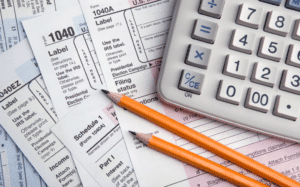 If you’re a business owner, you’re no doubt familiar with all the ins and outs of the taxes involved with your business’s operation. Between finding the right equipment, the logistics of purchasing it, and doing all the necessary bookkeeping, it can be a real hassle – but if you know your stuff, you may find your business qualifies for some nice benefits, hidden deep in US tax code.
If you’re a business owner, you’re no doubt familiar with all the ins and outs of the taxes involved with your business’s operation. Between finding the right equipment, the logistics of purchasing it, and doing all the necessary bookkeeping, it can be a real hassle – but if you know your stuff, you may find your business qualifies for some nice benefits, hidden deep in US tax code.
Section 179 is one of those benefits. Its inclusion in the US tax code is purpose-designed to incentivize small business owners to invest in themselves and help their businesses run bigger and better. It can be a powerful tool for optimizing your tax payments that too few people actually know about. But in this article, we’ll let you in on Section 179, explain what it is, what qualifies for Section 179, and how it may benefit your business.
What is Section 179?
To put it in simple terms, Section 179 allows small- to medium-sized businesses to write off the entire amount of a business equipment expense as a tax deduction all at once, as opposed to depreciating the asset over a longer period of time.
For smaller businesses, Section 179 allows you to grant yourself a substantially lighter tax burden in one year, instead of a comparatively larger tax burden over the course of many years. This increased tax relief makes it easier for business owners to purchase greater amounts of equipment in a shorter span of time – perfect for new and rapidly-growing businesses.
What Qualifies for Section 179?
Assets that qualify for Section 179 are slightly limited in scope. As the section was designed to give small businesses a boost to their bottom lines, it’s restricted to machinery and equipment that is typically used in a business’s day-to-day operations.
Cars, trucks and other vehicles are one of the most widely-known ways that businesses capitalize on Section 179. However, computers, computer software, furniture, production equipment or other business-critical equipment, and – most importantly for our purposes – office equipment like printers, copiers and more, all qualify for Section 179.
The asset(s) must also be tangible, something you can physically hold or point to – not a loan repayment, something abstract or symbolic, and so on.
Section 179 Applies to Business Expenses Only
Items must be business expenses in order to have Section 179 tax deduction eligibility. To qualify, the item(s) in question must be purchased with the intent of being used at a business, and the item(s) must be used for business-related purposes at least 50% of the time.
Additionally, your deduction’s value is directly tied to how much business vs. personal use it receives. For example: an eligible car, filed as a Section 179 expense, that’s used by a business half the time, and by the business owner for personal use the other half of the time, will only receive a tax deduction equivalent to half the car’s price.
On the flip side, an office printer that’s used by the business 100% of the time will receive a tax deduction on the entire price of the printer.
What Are the Limits of Section 179?
This incentive, being designed for small or medium-sized businesses, has certain limitations in place so that it doesn’t incentivize businesses that are considered too large.
Assets must be considered depreciable in order to qualify for Section 179’s deduction, for example. For many small businesses, most of what gets your business running will likely qualify as a depreciable asset – think automobiles, electronics, furniture and appliances, and other large items that need routine replacement every once in a while.
Additionally, there is an upper limit to what businesses may ask for a Section 179 deduction on. The maximum deduction you can achieve in the 2022 tax year is $1,080,000, which means the maximum amount of equipment expenses must not exceed $2,700,000. This, as previously mentioned, ensures only smaller businesses can reasonably take advantage of this incentive.
How Section 179 Can Benefit You & Your Business
Designed to allow greater freedom for small businesses to build up their money-making capabilities, this incentive can be a big weight off of your shoulders as a small business owner. Depending on your circumstances, you may find that Section 179 boosts your ability to grow your business, and shift more resources away from paying taxes.
Among the things this incentive allows you to do is building up the capabilities of a new business, revitalizing old equipment of an existing business, expanding into new areas of your field, expanding your business’s infrastructure, and many more.
If your business is in need of new printers, copiers or other business equipment, Section 179 is your ticket to a much cheaper hardware acquisition experience. Get in touch with us at Complete Business Systems of Colorado today to learn more.
disclaimer: CBS does not provide tax, legal or accounting advice. This material has been prepared for informational purposes only, and is not intended to provide, and should not be relied on for, tax, legal or accounting advice.